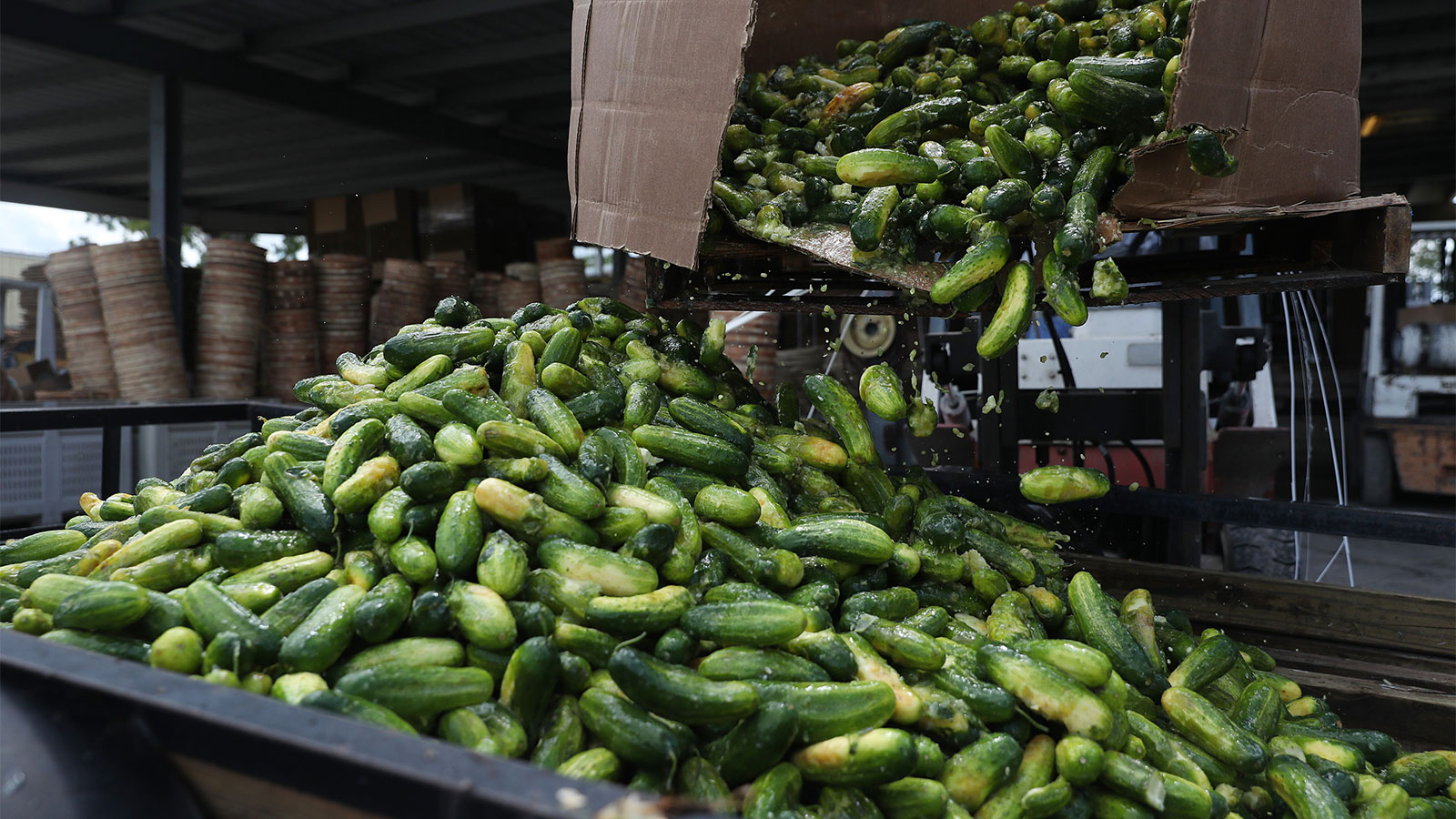On a recent Wednesday morning, Sean Daniels pulled a large van up to the parking lot of a community center in Newark, New Jersey. There, volunteers were busy packing potatoes, mushrooms, onions, green beans, and other produce items that had been donated by the meal kit company HelloFresh into dozens of bags to be delivered to local senior centers and affordable housing complexes.
This was not Daniels’ usual gig — he was a parts-and-service worker at an Audi dealership in northern New Jersey. But that day, he was acting as a volunteer for the Do-Good Auto Coalition, an organization that had sprung up in the few weeks since the start of the coronavirus pandemic with the goal of recruiting car dealerships and automakers to help shuttle supplies and food to those in need. Together with the food waste-reducing nonprofit Table To Table, which acted as the middleman between HelloFresh and the community center, the volunteer packers and drivers served more than 800 families that day.
Food waste might seem like an odd problem to have during a pandemic, but the shuttering of restaurants, arenas, schools, and other public institutions has created a glut of fresh produce stuck on farms with no buyers. Those producers operate within a completely separate supply chain to those who supply direct-to-consumer markets like grocery stores and food banks.
“Products that depend heavily on the food service market are clearly going to waste in much higher quantities right now. That’s things like seafood, specialized products like broccolini that, you know, you probably buy more in a restaurant than you would at home,” said Dana Gunders, the executive director of the national food waste-reducing non-profit Re-Fed. “Even more standard products like onions and tomatoes that we do buy and use in our homes [are not being used] in nearly the quantity that they are used in food service.”
The number of people in need of food assistance is also ballooning. The U.S. had about 40 million food-insecure people in pre-pandemic times, and now with unemployment rising to the highest level in nearly a century, demand for food assistance has outpaced supply.
Local organizations all over the country like Table to Table are trying to redirect excess food to families, but it’s unclear how much of a dent they can make to bridge the current disconnect in the food supply chain. Despite the general outcry against reports of fresh food being destroyed across the country while an estimated 1 in 5 American children goes hungry, the scramble for solutions to the food system’s collapse has been piecemeal. As governments, nonprofits, individual farmers, and even startup-spirited college students attempt to address the dual problems of too much food on farms and not enough in fridges, experts and advocates are cautioning that we’ll need a coordinated, long-haul set of solutions.
One of the main challenges right now, Gunders said, is a lack of good data. Even though the media is flooded with images of produce rotting in the fields, it’s unclear how much food is actually being produced and left to rot as retailers, consumers, and government agencies shift their buying habits in response to the pandemic.
Another challenge is that the programs springing up in response to the food crises may not be flexible enough for the food system to efficiently take advantage of them. In mid-April, for example, the U.S. Department of Agriculture announced the federal Coronavirus Food Assistance Program, under which the agency will buy up to $3 billion in fruits and vegetables, dairy products, and meat from farmers and redistribute it to families in need. But the plan tasks distributors with packing the goods in variety boxes ready to hand directly to families, rather than shipping the food to pantries and food banks in bulk — a requirement that many smaller distributors are not prepared to fulfill.
“You’re hearing a lot of ‘I could save 15 truckloads of broccoli right now, but I can’t necessarily get them all into their own boxes,’” said Gunders.
Another challenge is getting food from one place to another. Farmers who try and donate their doomed harvests also face untenable out-of-pocket costs for transporting their crops to areas where it can be distributed. “Right now, if you donate food, you receive an enhanced tax deduction for that donation,” explained Gunders. “But if you donate the service of transporting donated food, you don’t … It’s a key hurdle, especially for getting fresh, perishable healthy products to the food rescue system.”
Harvard’s Food Law and Policy Clinic director Emily Broad Leib agreed that restructuring tax incentives for farmers could be an easy way to reduce food waste. But there’s no quick fix for the massive amount of coordination required between various government agencies and food system stakeholders.
Broad Leib recommended encouraging states and localities to buy farmers’ excess food as much as possible. And more importantly, she said the government should expand the reach of the Supplemental Nutrition Assistance Program, also known as food stamps, including for online food orders. Broad Leib points out that because every dollar spent on SNAP generates about $1.50 in GDP growth, increasing access to SNAP could also bolster local economies — especially if Americans could easily use the vouchers to buy food from local markets and farmers as well as large supermarket chains.
“We have a food system that has a lot of challenges, even in good times,” said Broad Leib. “This pandemic has really shown those frayed edges.”



